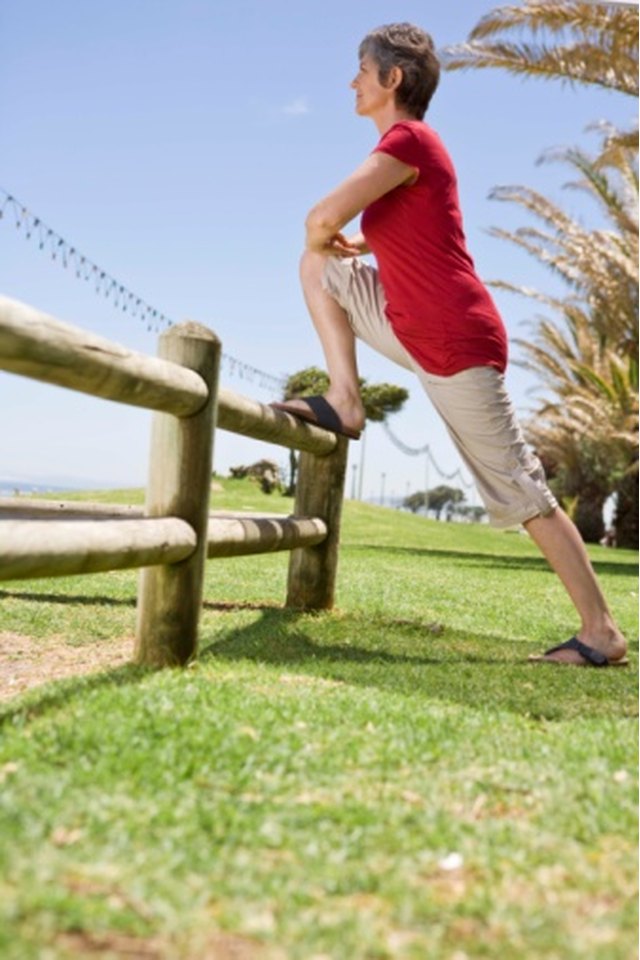Why Do Muscles Get Sore After Stretching?

Stretching is one of the five components of fitness that should be included your regular workout routine, according to the American College of Sports Medicine. Stretching improves flexibility, which is the ability to move a joint through its full range of motion. It can reduce pain, increase movement and decrease risk of injury if done properly. However, it can leave your muscles feeling sore if you do not follow certain guidelines.
Overstretching
Overstretching is exactly what it sounds like -- you have stretched the muscle beyond what is normal and caused damage to the fibers. This can be caused by too much intensity or pain during a stretch, holding a stretch too long or even improper form during the stretch. Just as with resistance training and cardiovascular exercise, duration, intensity and form are all important during a flexibility session. You want to improve your range of motion and not compromise the health of your joints or muscles.
When to Stretch
There are two major forms of stretching -- dynamic and static. Dynamic stretching is a rhythmic movement that prepares your body for activity and warms up the joints. This type of stretching is done in a controlled manner and before you begin your chosen activity. Static stretching is when you hold your muscle in a lengthened position to literally stretch the muscle. This is best done at the end of a workout when your muscles are warm. Either one of these can cause muscle soreness, but static stretching can cause more laxity in your joints.
How to Stretch
The American College of Sports Medicine advises static stretching at least two days per week, but it can be done at the end of every exercise session. The intensity should be moderate, in which you should feel the pull that is uncomfortable but not painful. Hold the stretch at this point for about 20 to 30 seconds and slowly release. You can repeat the stretches two to five times.
Considerations
Your health and activity level should be taken into consideration when performing stretches. If you have a chronic muscle condition such as arthritis, take care when stretching. Flexibility is important, but it is easy to overstretch and increase your pain. If you are exercising a lot and stretching more than you normally would, all of this can cause microscopic damage to the muscle, making you feel sore. Ease back on your workouts and stretching to allow muscles time to heal.
References
- ACSM's Guidelines for Exercise Testing and Prescription; American College of Sports Medicine
- Essentials of Strength Training and Conditioning; National Strength and Conditioning Association
- MIT: Stretching and Flexibility
- BurningHeart View Profile
- Mtguy8787 View Profile
- LJ57 View Profile
- redhawk76 View Profile
Writer Bio
Bethany Kochan began writing professionally in 2010. She has worked in fitness as a group instructor, personal trainer and fitness specialist since 1998. Kochan graduated in 2000 from Southern Illinois University with a Bachelor of Science in exercise science. She is a Certified Strength and Conditioning Specialist, Certified Personal Trainer, Medical Exercise Specialist and certified YogaFit instructor.
